I arrived in Bern yesterday, but was still recovering a bit from the France vs. Wales game the night before, so I basically relaxed at the hotel. Probably a good idea, considering the hills I had to conquer today in Bern.
This is my last stop in Switzerland before heading to the Alsace region in France on Tuesday. Today I explored the Bern Old Town while attempting to complete a “treasure hunt” of sorts that was created for the 500th Anniversary of Anabaptism. I say “attempted,” because I had to use all of the hints provided to figure out where to go next. It was a really neat way to explore the history, though. The clues and information were created for a fictional character, but based on accurate accounts of how the Anabaptists were treated (according to the treasure hunt creators).
I started at the Berner Munster, the largest Protestant reformation cathedral in Switzerland and where Anabaptists were persecuted quite harshly. Above the entrance to the church on the outside is an intricate sculpture that I just thought was another example of religious statues. Oh no—as you look at the pictures below, here’s what I learned. At the top of the statue stands Jesus. To the left as you look at the picture are the saints (blessed ones) who will join Jesus in heaven. The first one is Mary. To the right are the damned, starting with Johannes the Taufer. So the Anabaptists were despised so much, the church marked their damnation with a permanent statue. Definitely set the tone for the tour.
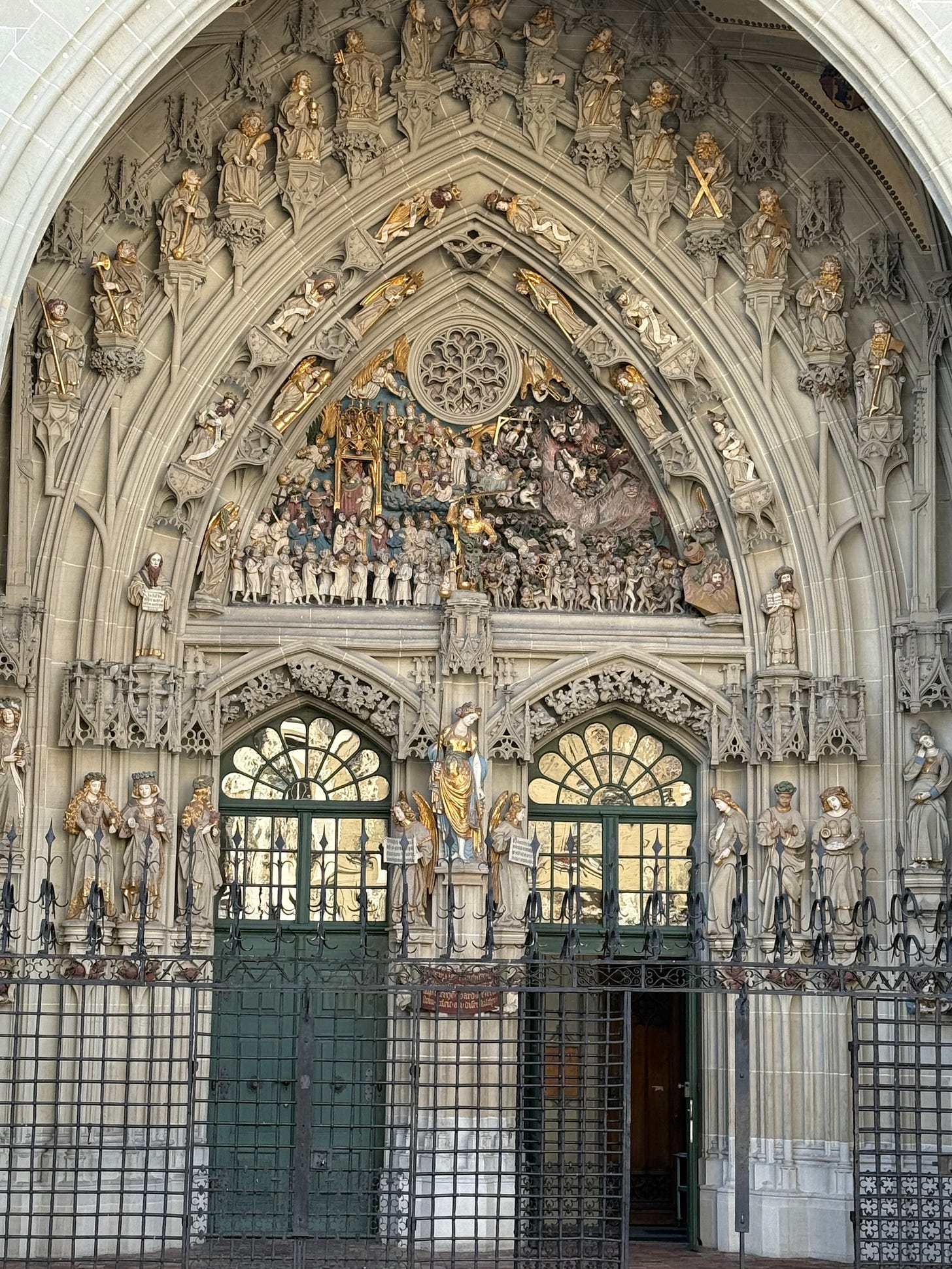

Here are some other pictures of the church.
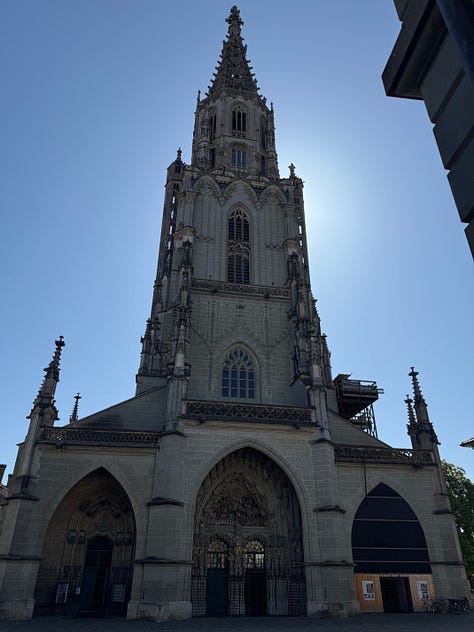
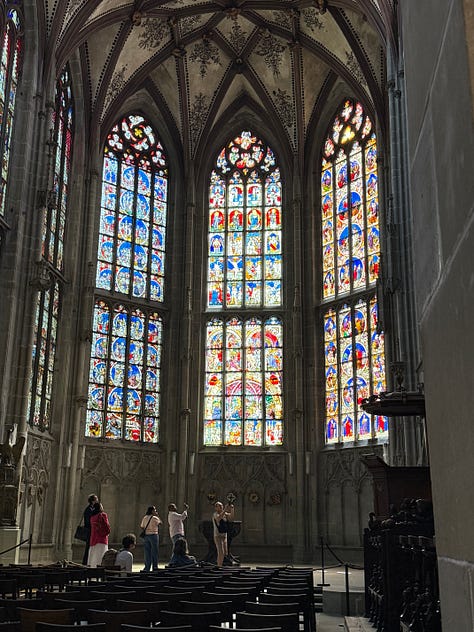
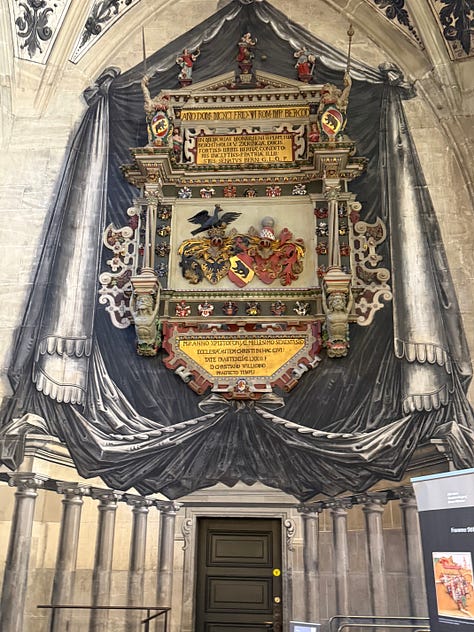
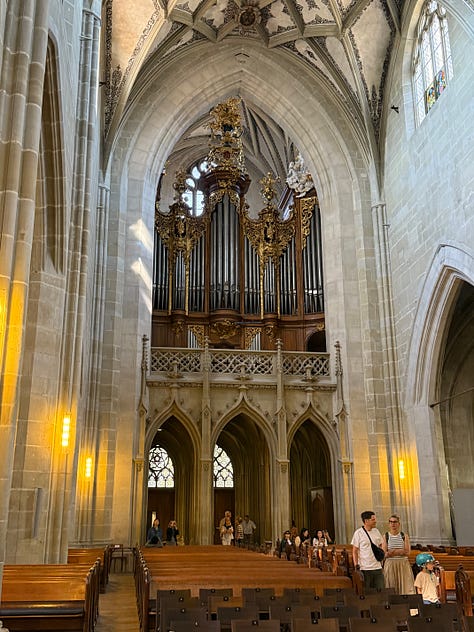
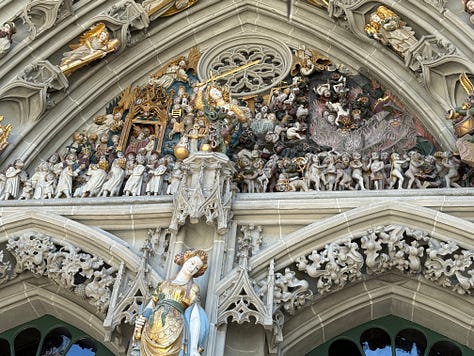
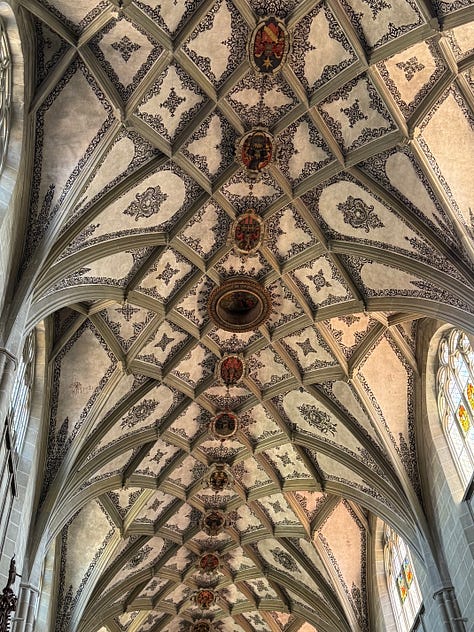
After spending some time simply sitting in a pew trying to imagine what it would have been like 500 years ago for my Mennonite ancestors, I headed to Station #2 of the trail, the site where accused criminals (that included Anabaptists) were put into the stockade while waiting their punishment. The location is a corner pharmacy on what is called “Justice” street. I found it interesting that the statue above this corner is some guy holding an axe, like he’s waiting to behead someone. Not sure if that’s the intent, but….
The next station took me to a location that looked like a really nice building that housed a prison at one time. Many criminals were taken here to await trial and their punishment.
Next I headed toward the river to find a small terrace overlooking the river. Here was another clue to my final stop, as well as a nice view of the Aare river.
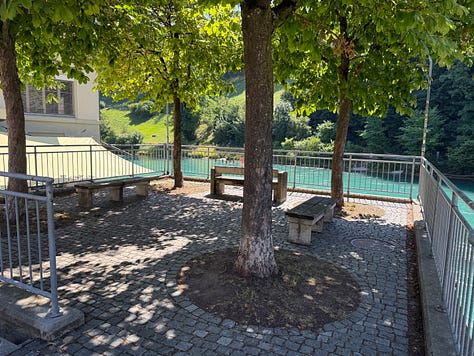

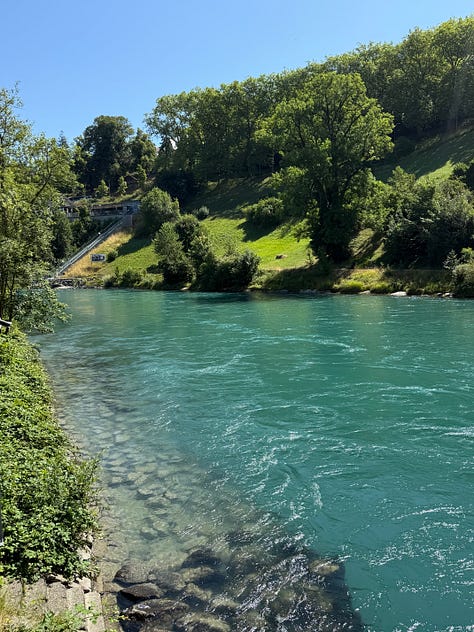
My final stop of this mini-tour was the remnants of a jail cell down by the Aare river. According to the treasure hunt story, the criminal would be held here to determine if they were going to be drowned in the river or be tortured in one of the “blood” towers until they renounced their faith.
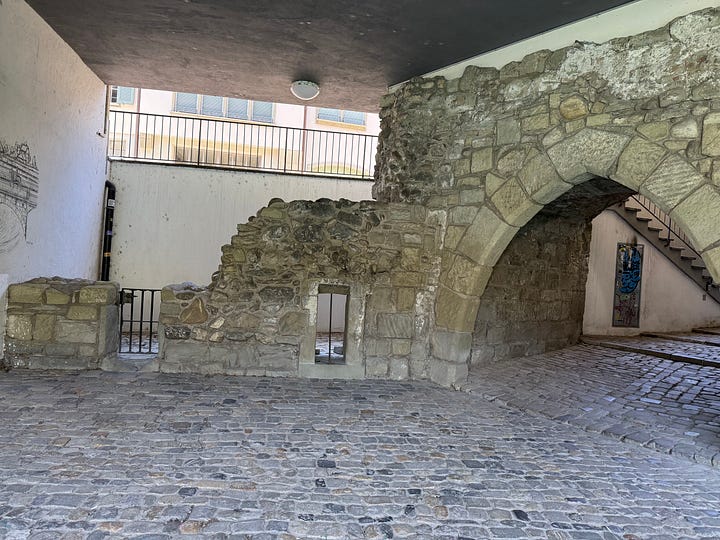
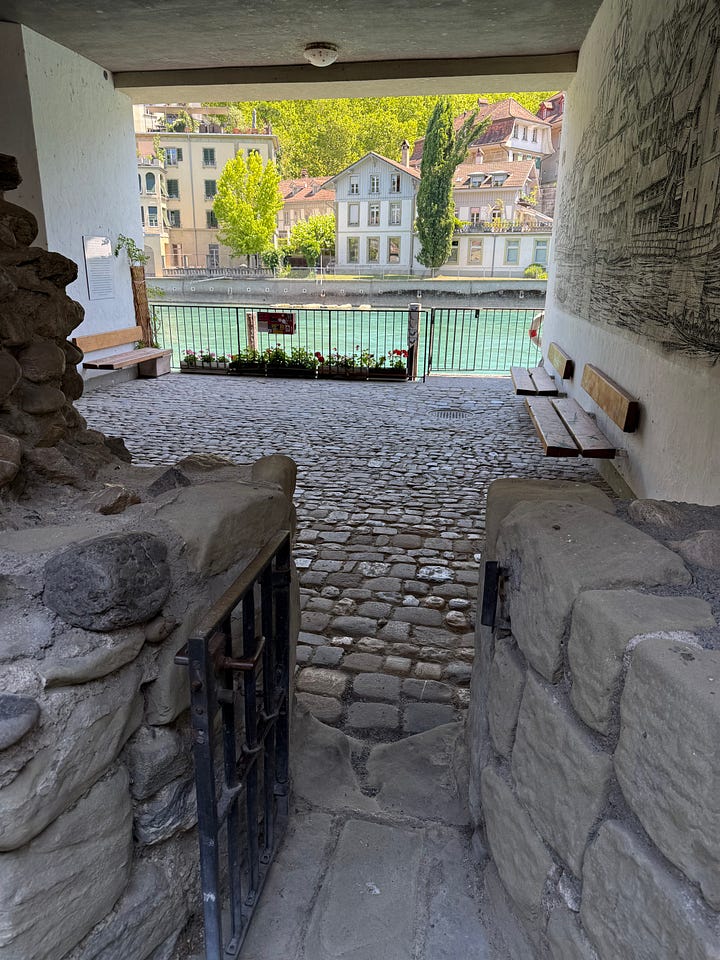
The story told on the display next to the cell described how the Anabaptist prisoner didn’t lose hope because they turned and saw a gold cross gleaming in the sky above the cell, a church spire close to the site. I’m not sure if the story is 100% true/accurate, but the sites were all real and used in the persecution.
In my reading prior to the trip, I found out that in 2017 the Canton of Bern officially apologized to the Swiss Mennonites for the 200 years of persecution, and in true Mennonite fashion, the Swiss Mennonites accepted the apology. Since that time, both groups have worked to create various Anabaptist history trails to highlight Anabaptist heritage in the region (I will be exploring one of those trails tomorrow when I visit a castle where many Anabaptists were imprisoned).
Now for some unrelated pictures of Bern. Below is a compilation of the various statues I found around the Old Town section. They are much more colorful than the ones in Zurich and St. Gallen, but a couple seem a bit odd to me. One shows a person appearing to eat a child (I have no idea why).
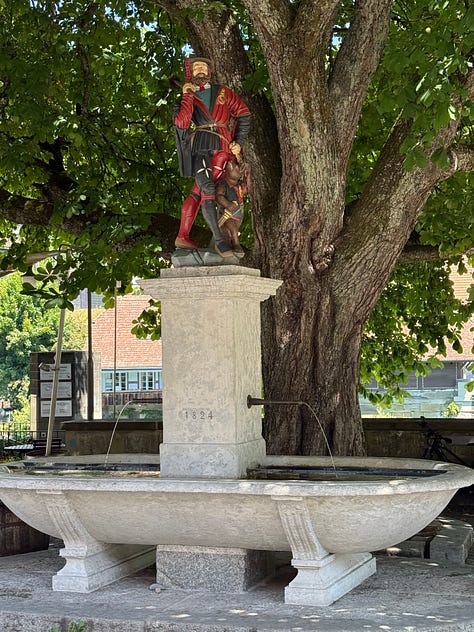
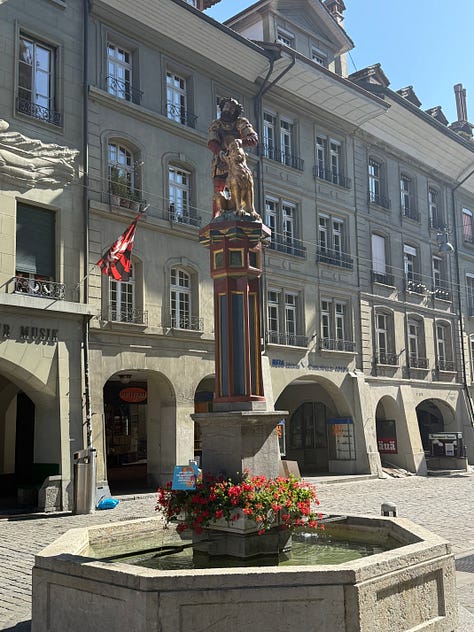
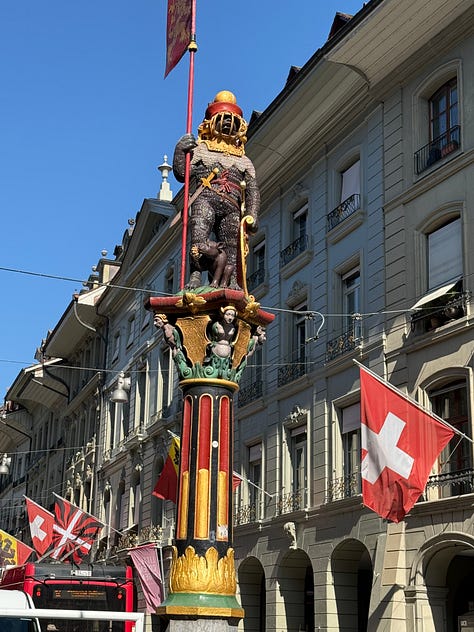
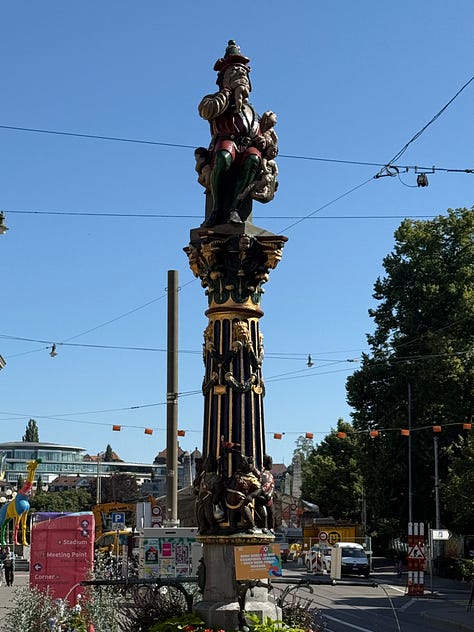
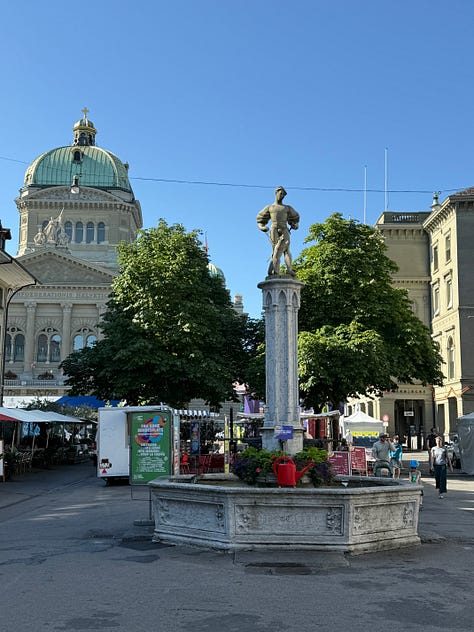
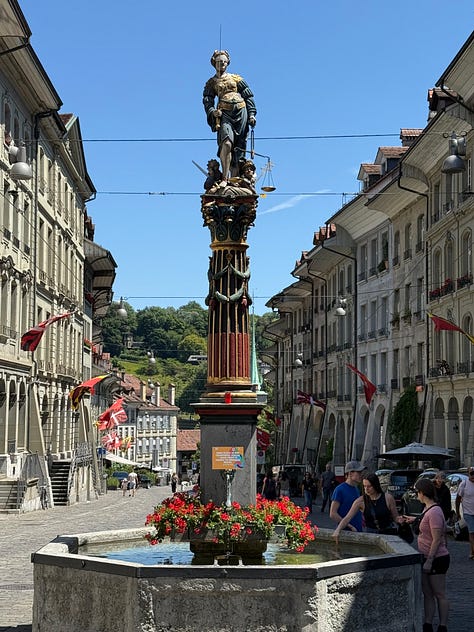
Bern is also famous for its clock so here’s a picture of that too. I wasn’t really wowed by it, but I guess it’s a tourist attraction.
Finally, here are a few more random pictures of the Old Town area and views of the river.
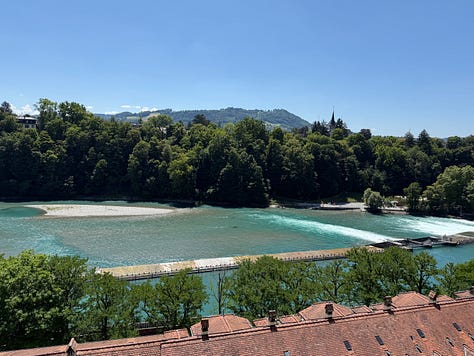

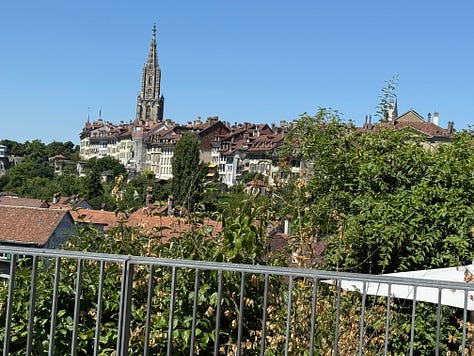
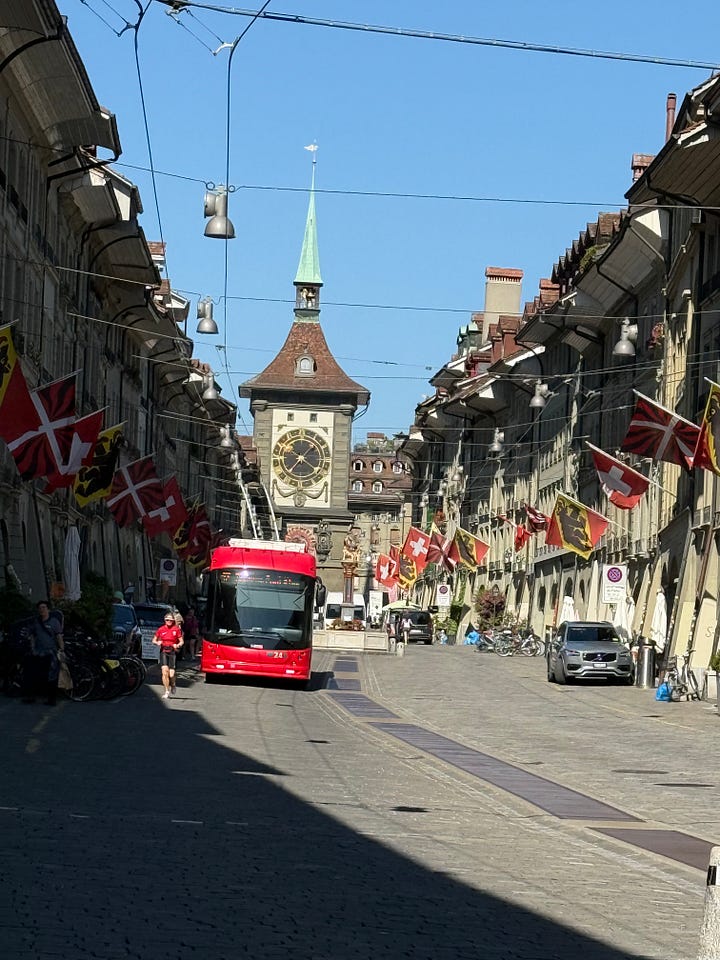
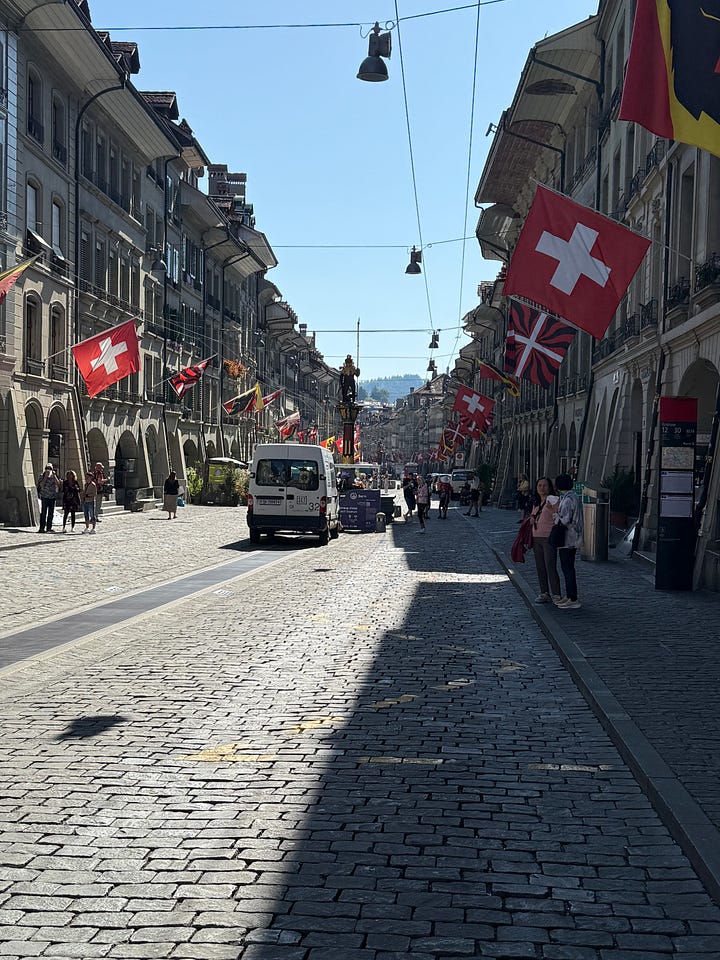
As the capital of Switzerland, Bern feels much busier than Zurich did, but I think my favorite place that I’ve visited so far has to be St. Gallen. As mentioned earlier, tomorrow I take a train to Trachelswald castle. Then either on Sunday or Monday, I head to Thun, a city on a lake where my Stutzman ancestors potentially came from.







We were just in that area last year. Stayed in Interlaken. I knew Stutzman was Swiss German but thought we were closer to the Germany border. Had no idea, I was that close to Thun and didn't check it out. You'll love seeing the lake. So beautiful!
My Springer ancestors hail from the Alsace region, a village called Struth that was a Mennonite/Ashkenazi Jewish commune. I would love to visit the region someday.